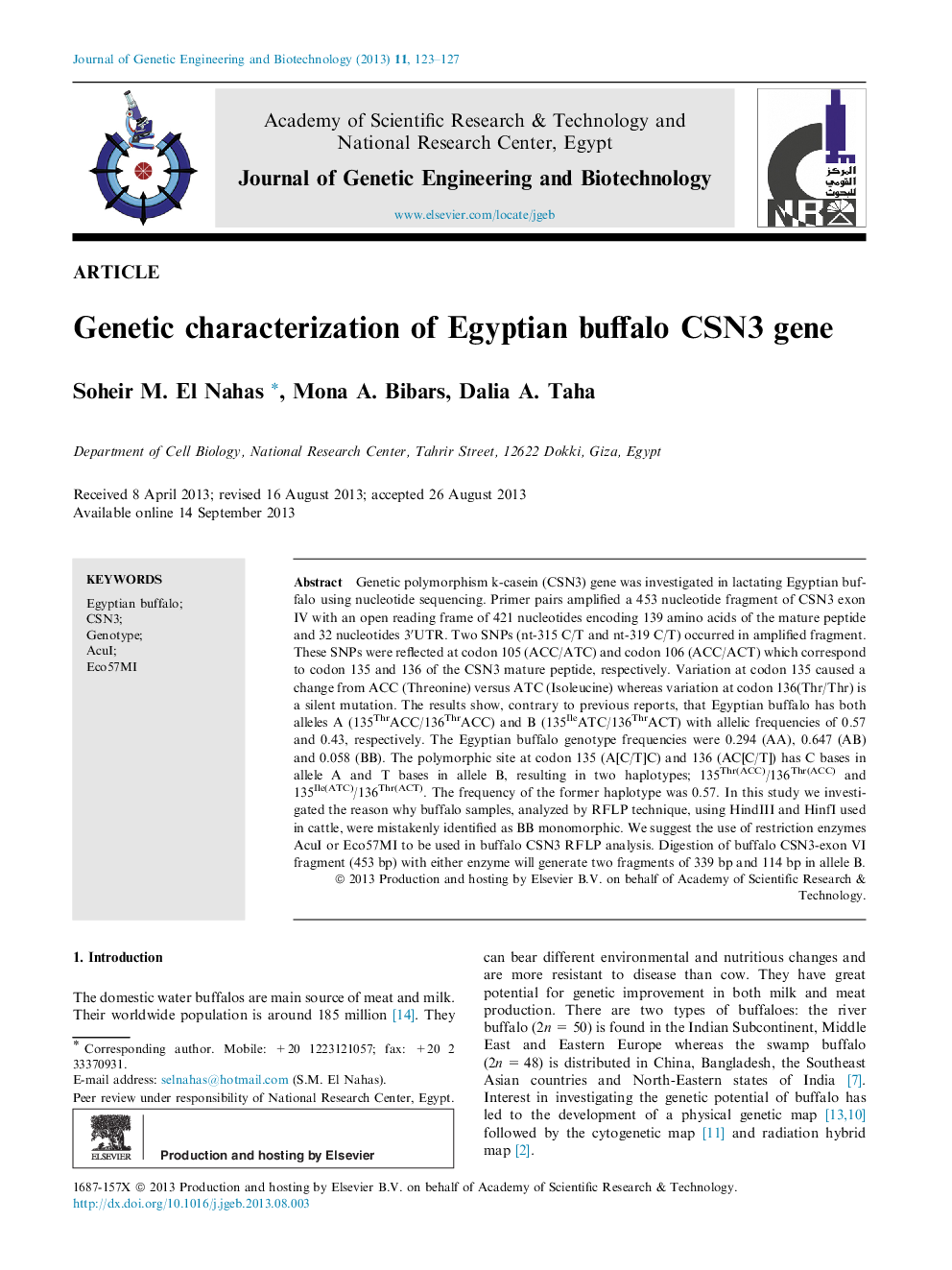| Article ID | Journal | Published Year | Pages | File Type |
|---|---|---|---|---|
| 2087920 | Journal of Genetic Engineering and Biotechnology | 2013 | 5 Pages |
Genetic polymorphism k-casein (CSN3) gene was investigated in lactating Egyptian buffalo using nucleotide sequencing. Primer pairs amplified a 453 nucleotide fragment of CSN3 exon IV with an open reading frame of 421 nucleotides encoding 139 amino acids of the mature peptide and 32 nucleotides 3′UTR. Two SNPs (nt-315 C/T and nt-319 C/T) occurred in amplified fragment. These SNPs were reflected at codon 105 (ACC/ATC) and codon 106 (ACC/ACT) which correspond to codon 135 and 136 of the CSN3 mature peptide, respectively. Variation at codon 135 caused a change from ACC (Threonine) versus ATC (Isoleucine) whereas variation at codon 136(Thr/Thr) is a silent mutation. The results show, contrary to previous reports, that Egyptian buffalo has both alleles A (135ThrACC/136ThrACC) and B (135IleATC/136ThrACT) with allelic frequencies of 0.57 and 0.43, respectively. The Egyptian buffalo genotype frequencies were 0.294 (AA), 0.647 (AB) and 0.058 (BB). The polymorphic site at codon 135 (A[C/T]C) and 136 (AC[C/T]) has C bases in allele A and T bases in allele B, resulting in two haplotypes; 135Thr(ACC)/136Thr(ACC) and 135Ile(ATC)/136Thr(ACT). The frequency of the former haplotype was 0.57. In this study we investigated the reason why buffalo samples, analyzed by RFLP technique, using HindIII and HinfI used in cattle, were mistakenly identified as BB monomorphic. We suggest the use of restriction enzymes AcuI or Eco57MI to be used in buffalo CSN3 RFLP analysis. Digestion of buffalo CSN3-exon VI fragment (453 bp) with either enzyme will generate two fragments of 339 bp and 114 bp in allele B.
